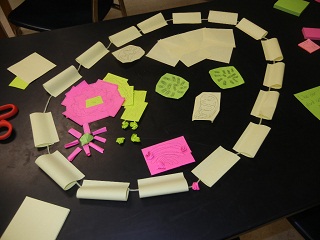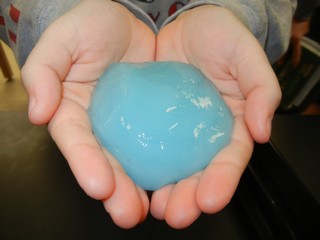The cell doesn’t have to be boring slides and worksheets. Try one of these creative cell models to engage students and promote learning.
1. 3 D Cell – this is a standard project for entry level biology classes, where students use various objects from around the house to design a three dimensional cell. Popular models are made of clay, cardboard, or styrofoam.
Pros: Students seem to enjoy the project and you end up with a lot of amazing models.
Cons: Can be expensive, difficult to store, or attract bugs if they are made of candy or other perishables, mostly done as individual projects.
2. Post- IT Cell – this model can be built in class using post it notes. The post-its can be drawn on, labeled or cut to particular shapes. This is a good activity for one class period and students can work in groups to discuss their models, cell structures, and functions. Pros: This is a quick activity and does not require a lot of preparation. Cons: Post-its can be expensive, and students will use a lot of them.

3. Digital Cell – Students create a digital version of a cell using an online creator such as pixlr or sumopaint. Designs can be uploaded and shared via social networks or photo sites. It is even possible to use a virtual bulletin board to have the class create the cell as a group, with each person adding their own element (organelle). Pros: Incorporates technology and allows for a lot of design creativity. Cons: Requires internet connection, photo storage accounts and some planning.

4. Cell Show and Tell – Students are assigned a single part of the cell, like the mitochondria and are tasked to bring in object from home that represents the structure. Any item will work, but students must present the object and explain how it represents the cell structure. Pros: Promotes critical thinking and requires students to actually talk about the cell and justify their choice. Cons: It can take a whole class period for the “telling” part.

5. Cell Charades – This is a fun game to play at the end of the cell unit, students must act out the part of the cell structure while their team-mates try to guess the structure An alternative to the game format is to ask students to come up with hand signals for each structure and then practice using the symbols instead of the words. Pros: Students have a lot of fun with this and it works well for kinesthetic learners. Cons: They already need to have a pretty good understanding of the cell for the game to work well.

